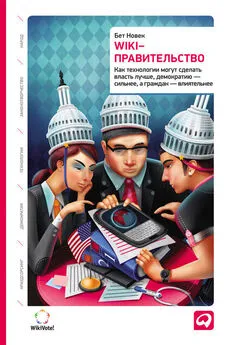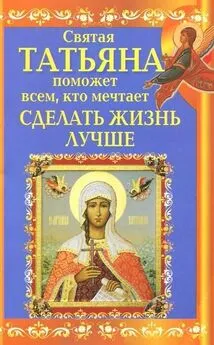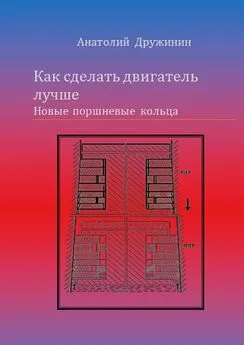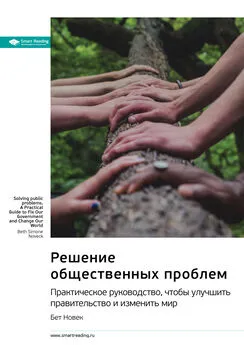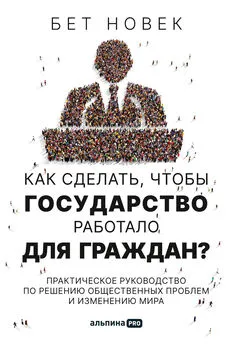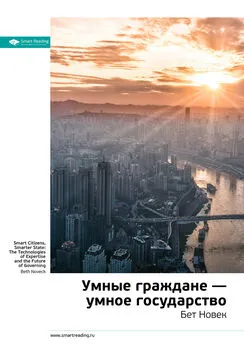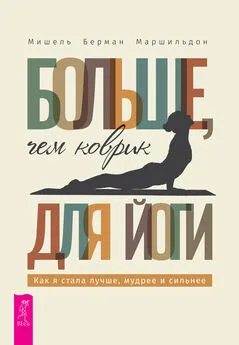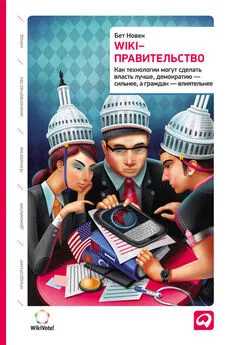Бет Новек - Wiki-правительство: Как технологии могут сделать власть лучше, демократию – сильнее, а граждан – влиятельнее
- Название:Wiki-правительство: Как технологии могут сделать власть лучше, демократию – сильнее, а граждан – влиятельнее
- Автор:
- Жанр:
- Издательство:Array Литагент «Альпина»
- Год:2012
- Город:Москва
- ISBN:978-5-9614-2753-0
- Рейтинг:
- Избранное:Добавить в избранное
-
Отзывы:
-
Ваша оценка:
Бет Новек - Wiki-правительство: Как технологии могут сделать власть лучше, демократию – сильнее, а граждан – влиятельнее краткое содержание
Такой подход дает возможность за счет новой формы коллективных действий повысить эффективность государственных структур, укрепить и усовершенствовать демократию, создав, как утверждает автор, «правительство людей, для людей и с участием людей».
Wiki-правительство: Как технологии могут сделать власть лучше, демократию – сильнее, а граждан – влиятельнее - читать онлайн бесплатно ознакомительный отрывок
Интервал:
Закладка:
25. PublicMarkup ( www.publicmarkup.org[October 2008]); см. также: Ellen Miller, “You Can Markup the Bills on the Mortgage Industry Bail Out,” September 22, 2008 (blog.sunlightfoundation.com/2008/09/22 [October 2008]).
26. MapLight ( www.maplight.org[October 2008]).
27. Connecticut Policy and Economic Council ( www.city-scan.org[October 2008]).
28. Frank Richard Cowell, The Athenaeum: Club and Social Life in London, 1824–1974 (London: Heinemann, 1975).
29. Stephen M. Kosslyn, “On the Evolution of Human Motivation: The Role of Social Prosthetic Systems,” in Evolutionary Cognitive Neuroscience, edited by S. M. Platek, T. K. Shackelford, and J. P. Keenan (MIT Press, 2006); A. W. Wooley and others, “Using Brain-Based Measures to Compose Teams: How Individual Capabilities and Team Collaboration Strategies Jointly Shape Performance,” Social Neuroscience 2 (2007): 96–105.
30. Edward Day Collins, “Committees of Correspondence of the American Revolution,” Annual Report of the American Historical Association (1901): 245–271.
31. Harvey Anderson, “Intellectual Property and Free Expression,” лекция, Stanford University, May 27, 2008 (примечания в тексте сделаны автором).
32. Mitchell Baker, Mozilla Foundation chairman of the board, “Summer 2008 Goals,” May 14, 2008 (blog.lizardwrangler.com/2008/05/14 [October 2008]).
33. “Energy Bill Bans Incandescent Lightbulbs.” Более полную информацию о ртутьсодержащих лампах см. на сайте EPA
46. Diana C. Mutz, Hearing the Other Side: Deliberative versus Participatory Democracy (Cambridge University Press, 2006).
47. Cass Sunstein, Why Societies Need Dissent (Harvard University Press, 2003), p. 118.
48. Ann Macintosh and Stephen Coleman, “Promise and Problems of EDemocracy: Challenges of Online Citizen Engagement” (Paris: OECD, 2003).
49. Peter M. Shane, ed., Democracy Online: The Prospects for Political Renewal through the Internet (New York: Routledge, 2004).
50. Karen Czapanskiy and Rashida Manjoo, “The Right of Public Participation in the Law-Making Process and the Role of the Legislature in the Promotion of This Right,” University of Maryland School of Law Legal Studies 42 (2008): 31.
51. Alexander Meiklejohn, Political Freedom: The Constitutional Powers of the People (New York: Harper, 1960).
52. Edward Wyatt with Charles V. Bagli, “Visions of Ground Zero: The Public; Officials Rethink Building Proposal for Ground Zero,” New York Times, July 21, 2002, p. A1.
53. См., например: Howard Zinn, A Power Governments Cannot Suppress (San Francisco: City Lights, 2007).
54. Michael Sorkin, Starting from Zero: Reconstructing Downtown New York (New York: Routledge, 2003), pp. 57–61.
55. Michael Schudson, The Good Citizen: A History of American Civil Life (New York: Free Press, 1998).
56. Есть ряд предложений в теории гражданского общества: Benjamin R. Barber, Strong Democracy (Princeton University Press, 1984); Richard E. Sclove, Democracy and Technology (New York: Guilford, 1996); Theda Skocpol and Morris P. Fiorina, eds., Civic Engagement in American Democracy (Brookings, 1999).
57. Jack M. Balkin, “Digital Speech and Democratic Culture: A Theory of Freedom of Expression for the Information Society,” New York University Law Review 79 (2004): 1–58.
58. Идеальный тип группы включает «представителей всех слоев нашего общества; только в этом случае при надлежащем финансировании она будет действовать беспристрастно, мудро, организованно и четко». Donald Guimary, Citizens Groups and Broadcasting (New York: Praeger, 1975), p. 148.
59. Andy Oram, “In Search of Microelites: How to Get User-Generated Content,” November 14, 2007 (radar.oreilly.com/2007/11/in-search-ofmicroelites-how-t.html [October 2008]).
60. Joseph Nye, “Picking a President,” Democracy Journal (Fall 2008): 19–28.
61. Sony Corp. of America v. Universal City Studios, 464 U. S. 417 (1984).
62. Prioritizing Resources and Organization for Intellectual Property Act of 2008 (ProIP Act) S. 3325. Nate Anderson, “Big Content Gloats as Bush Signs Pro-IP Act,” ArsTechnica, October 14, 2008 ( http://arstechnica.com/news.ars/post/20081014-bush-signs-pro-ip-act-big-content-gloats.html[December 2008]); John Borland, “RIAA Settles with 12-Year-Old Girl,” September 9, 2003 ( http://news.cnet.com/2100-1027-5073717.html[October 2008]); Eric Bangeman, “RIAA versus Grandma, Part II: The Showdown That Wasn’t,” December 16, 2007 (arstechnica.com/news.ars/post/20071216.html [October 2008]). См. также: MGM Studios Inc. v. Grokster, Ltd., 545 U. S. 913 (2005) (peer-to-peer filesharing case) (arstechnica.com/news.ars/post/20081014.html [October 2008]).
Глава 3
1. U. S. Patent and Trademark Office, “Patent Organization” ( www.uspto.gov/web/offices/pac/index.html[October 2008]).
2. В TC-2100 скопилось 87 301 заявка, ожидающая начала экспертизы, а всего в Бюро патентов 151 698 патентных заявок. В 2008 г. TC 2100 слилось с другим подразделением и стало называться TC 2400. Джек Харви остался руководителем.
3. Patent Act of 1952, as amended. 35 U. S. C. 101 et seq.
4. “Confidential status of applications; publication of patent applications,” 35 U. S. C. 122 (November 29, 2000).
5. “Infringement of patent,” 35 U. S. C. 271 (December 8, 2003); “Damages,” 35 U. S. C. 284 (November 29, 2000); “Injunctions,” 35 U. S. C. 283 (July 19, 1952), “Attorney fees,” 35 U. S. C. 285 (July 19, 1952); “Contents and term of patent; provisional rights,” 35 U. S. C. 154 (November 2, 2002); eBay Inc v. MercExchange, L. L. C., 547 U. S. C. 388 (2006) (запрет обсуждать ограничения и требования в патентах).
6. Другое исследование касается открытых приложений и документов, в частности доклада МВФ. См.: Richard Harper, Inside the IMF: An Ethnography of Documents, Technology, and Organizational Action (Academic Press, 2007); Geoffrey Bowker and Susan Leigh Star, Sorting Things Out: Classification and Its Consequences (MIT Press, 2008); Annelise Riles, ed., Documents: Artifacts of Modern Knowledge (University of Michigan Press, 2006).
7. Abraham Lincoln, “Lecture on Discoveries and Inventions (Feb. 11, 1859),” in Abraham Lincoln: Speeches and Writings, 1859–1865, edited by Don E. Fehrenbacher (New York: Library of America, 1989), p. 11.
8. См.: Saul Lach and Mark Schankerman, “Incentives and Invention in Universities,” RAND Journal of Economics 39 (June 22, 2008): 403–433; Association of University Technology Managers, “Emory Is Top-Ranked University in Latest Survey of Commercialized Research,” February 26, 2007 ( www.highbeam.com); “Bayh-Dole University and Small Business Patent Procedures Act,” P. L. 96–517, sec. 6 (a) (December 12, 1980).
9. Eben Moglen, “The Global Software Industry in Transformation,” annual lecture, Scottish Society for Computers and Law, Edinburgh, June 26, 2007 ( www.archive.org/details/EbenMoglenLectureEdinburghJune2007DVD[December 2008]).
10. Joseph Stigliz, “Give Prizes Not Patents,” New Scientist, September 16, 2006, p. 21.
11. Malcolm Gladwell, “In the Air,” New Yorker, May 12, 2008.
12. Frank Lewis Dyer and Thomas Commerford Martin, Edison: His Life and Inventions (New York: Harper and Brothers, 1910); см. также: The Incandescent Lamp Patent, Supreme Court of the United States, 159 U. S. 465 (1895).
13. Roger Bilstein, Flight in America: From the Wrights to the Astronauts (Johns Hopkins University Press, 2001), p. 28; Robert P. Merges and Richard R. Nelson, “On the Complex Economics of Patent Scope,” Columbia Law Review 839 (1990): 16–17.
14. James Bessen and Michael J. Meurer, Patent Failure (Princeton University Press, 2008).
15. James Bessen and Michael J. Meurer, “Do Patents Stimulate R&D Investment and Promote Growth?” ( www.patentlyo.com/patent/2008/03/do-patentsstim.html[October 2008]).
16. Mark Lemley and Bhaven Sampat, “Is the Patent Office a Rubber Stamp,” Working Paper 999098, Second Annual Conference on Empirical Legal Studies, Stanford (papers.ssrn.com/sol3/papers. cfm?abstract_id=999098 [October 2008]).
17. См.: Cecil D. Quillen Jr. and Ogden H. Webster, “Continuing Patent Applications and Performance of the U. S. Patent and Trademark Office,” Federal Circuit Bar Journal 11 (2001): 13; Cecil D. Quillen Jr., Ogden H. Webster, and Richard Eichmann, “Continuing Patent Applications and Performance of the U. S. Patent and Trademark Office: Extended,” Federal Circuit Bar Journal 12 (2002): 38 (снижение на 12 % по сравнению с более ранними вычислениями).
18. Эта глава отдает должное исследователям политического курса, таким как Дон Бренниз, изучающим взаимосвязи между информацией, опытом и коммуникативной практикой в области права и политики.
19. Autogiro Co. of America v. United States, 384 F. 2d 391 (1967); см. также: Diogenes Laertius, “Myson,” in The Lives and Opinions of Eminent Philosophers, translated by Charles Duke Yonge (H. G. Bohn, 1853). («Люди не должны искать вещи для слов, а слова для вещей; не вещи определяют слова, а слова вместе описывают вещи».)
20. Edward C. Walterscheid, The Nature of the Intellectual Property Clause: A Study in Historical Perspective (Buffalo: William S. Hein, 2002).
21. David G. Post, In Search of Jefferson’s Moose: Notes on the State of Cyberspace (Oxford University Press, forthcoming).
22. U. S. Patent 6805351, issued October 19, 2004.
23. Allan S. Lichtman and Rosemary R. Lichtman, “Professional malpractice board game apparatus,” U. S. Patent 4068848, issued January 17, 1978. Усиливает давление и то, что эксперты получают финансовые стимулы (в виде бонуса за производительность), заставляющие их быстрее выдавать патенты. См.: Gajan Retnasaba, “Why It Is Easier to Get a Patent in September,” May 23, 2008 (ssrn.com/bstrct=1121132 [October 2008]) (USPTO использует премиальную схему вознаграждения экспертов, работающих с патентами).
24. John Buell, “Weed-cutting golf club,” U. S. Patent Application 10/965431 (filed October 14, 2004).
25. Topliff v. Topliff, 145 U. S. 156 (1892).
26. Senmed Inc. v. Richard-Allan Medical Industries, 888 F. 2d 815 (Fed. Cir. 1989).
27. Tom Krazit and Anne Broache, “BlackBerry Saved,” March 3, 2006 (news.cnet.com/BlackBerry-saved/2100-1047_3–6045880.html? tag=mncol;txt [October 2008]).
28. Darko Kirovski, “Off-line economies for digital media,” U. S. Patent Application 11/296194, published June 14, 2007; см. также: “Off-line economies for digital media” (peertopatent.org/patent/20070136608/activity [October 2008]).
Читать дальшеИнтервал:
Закладка:
